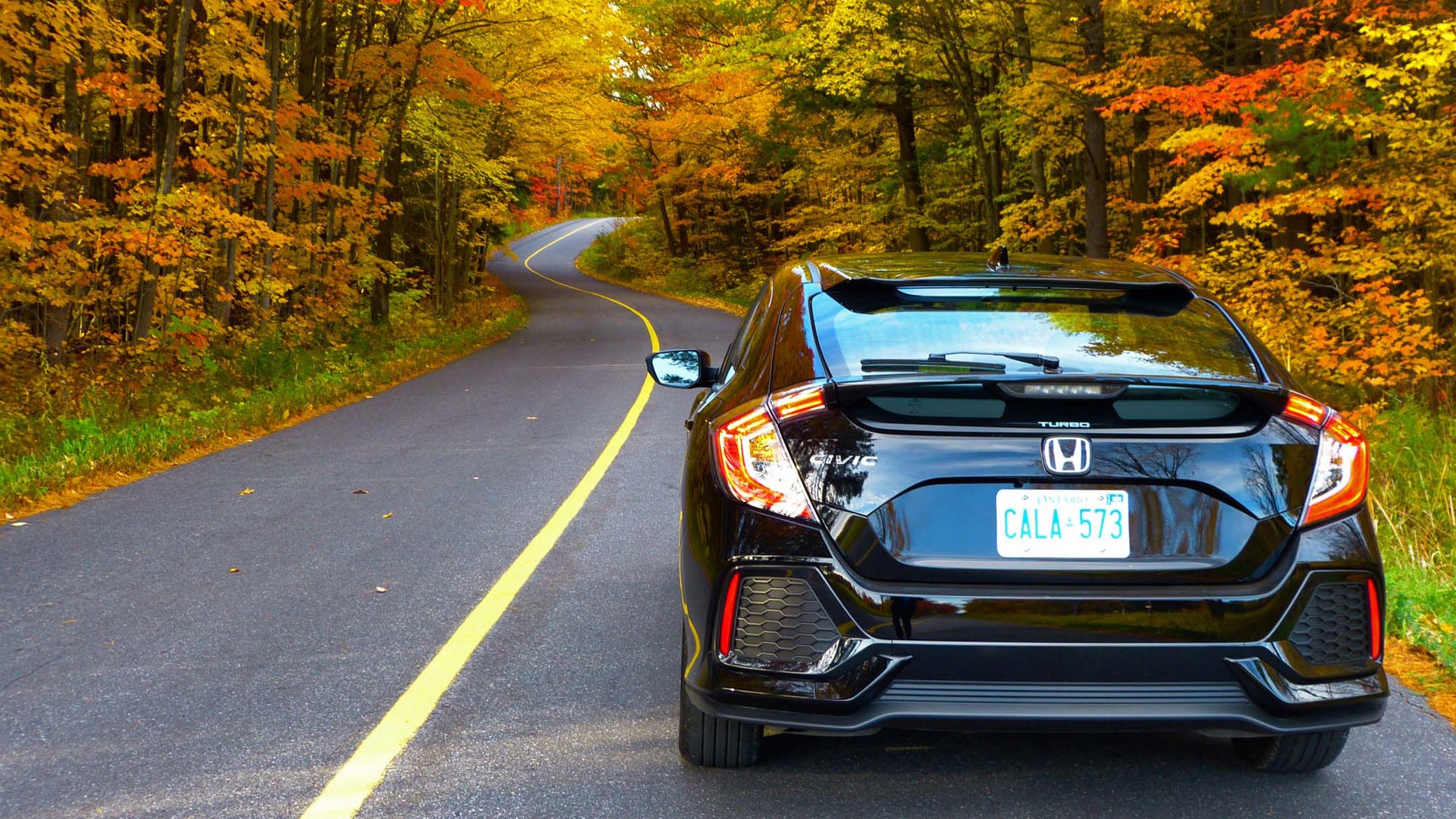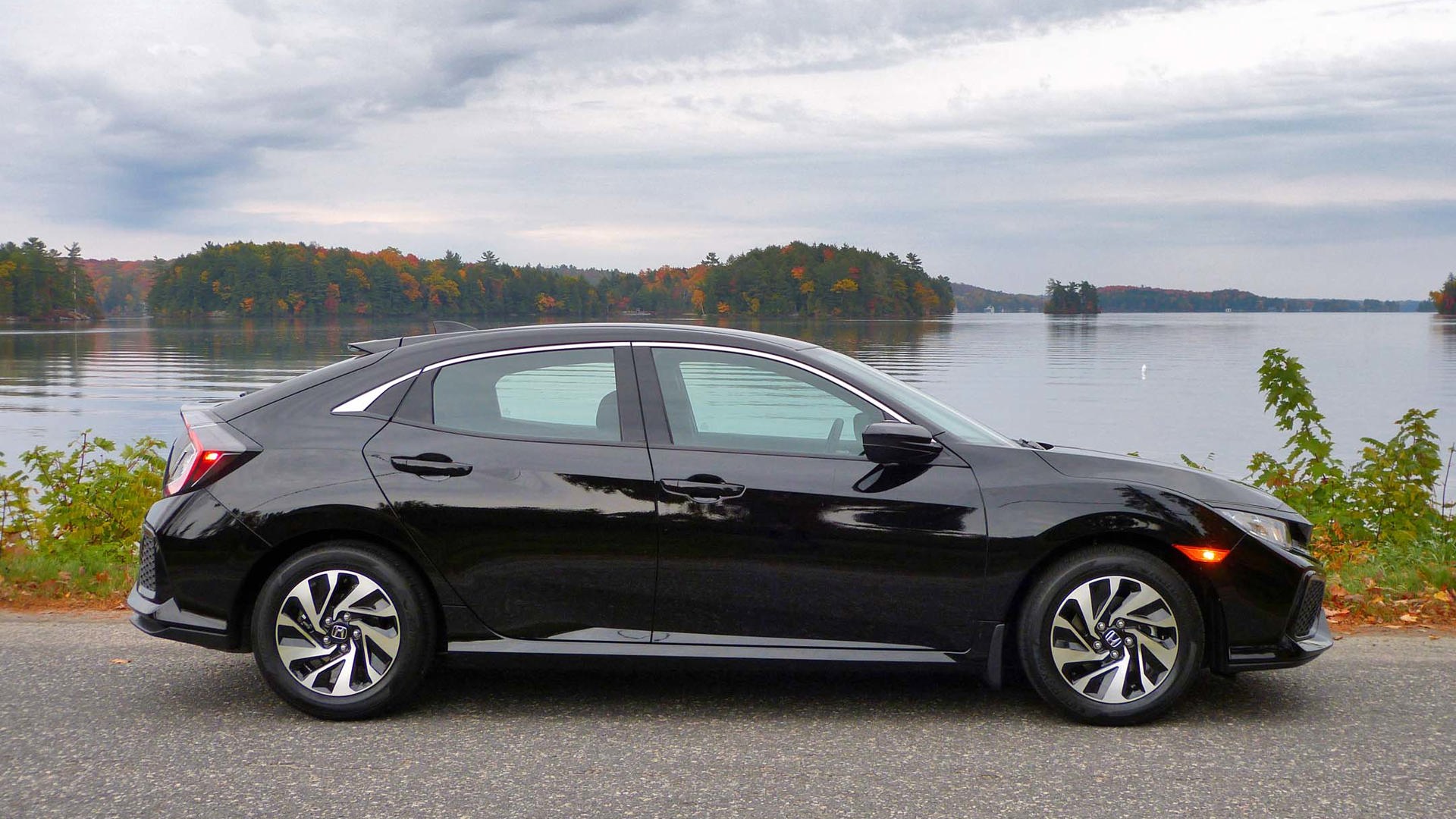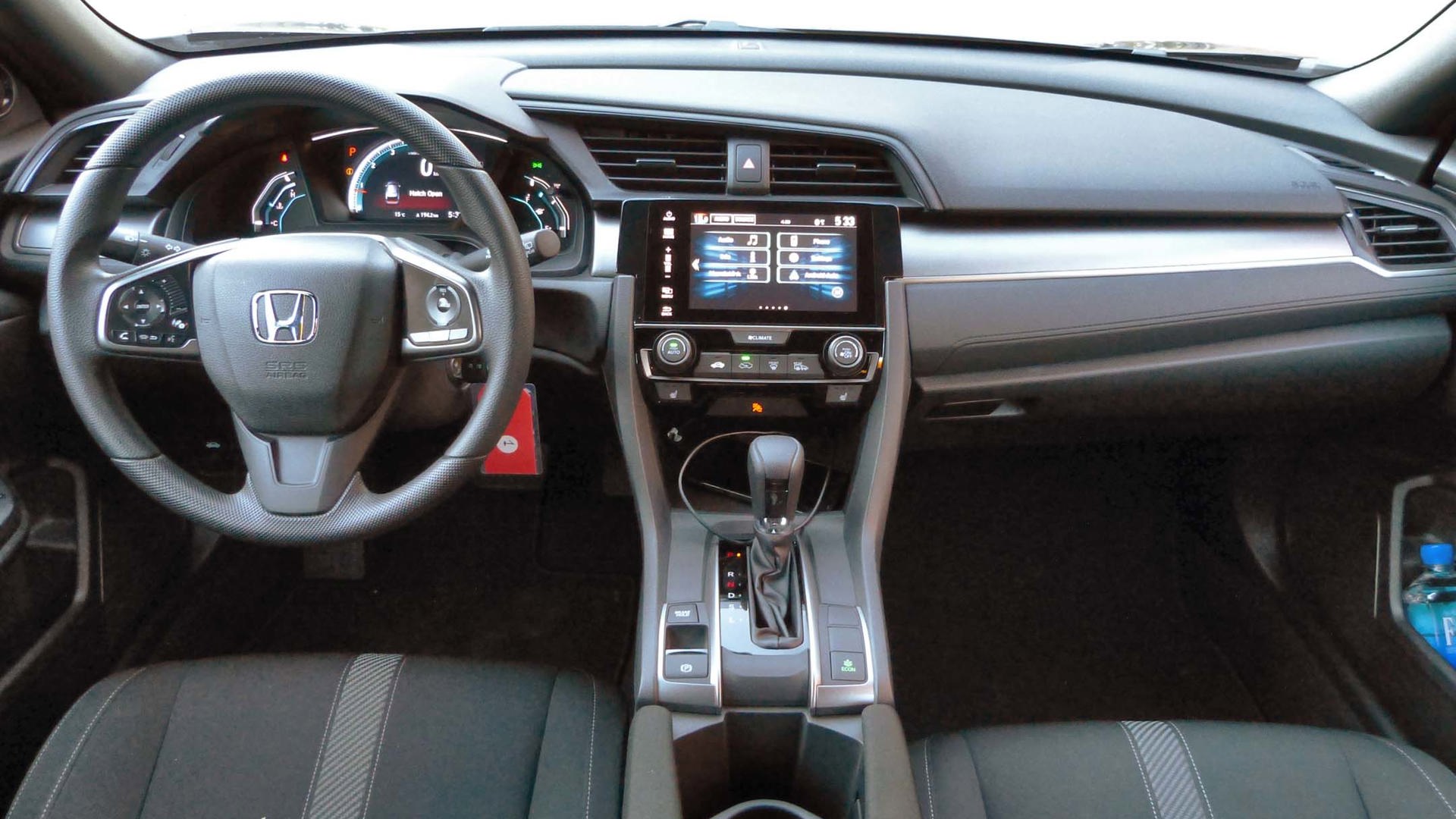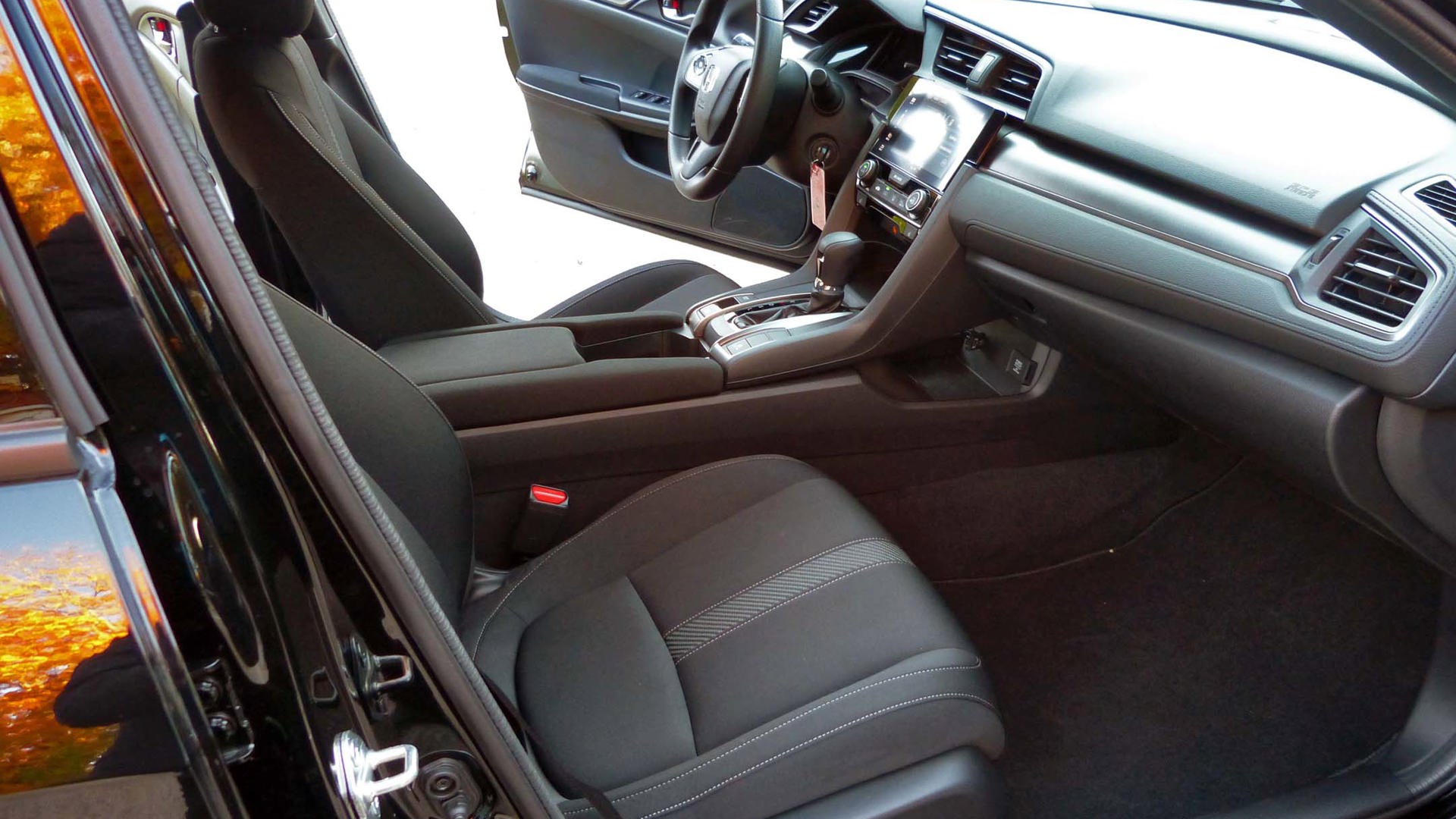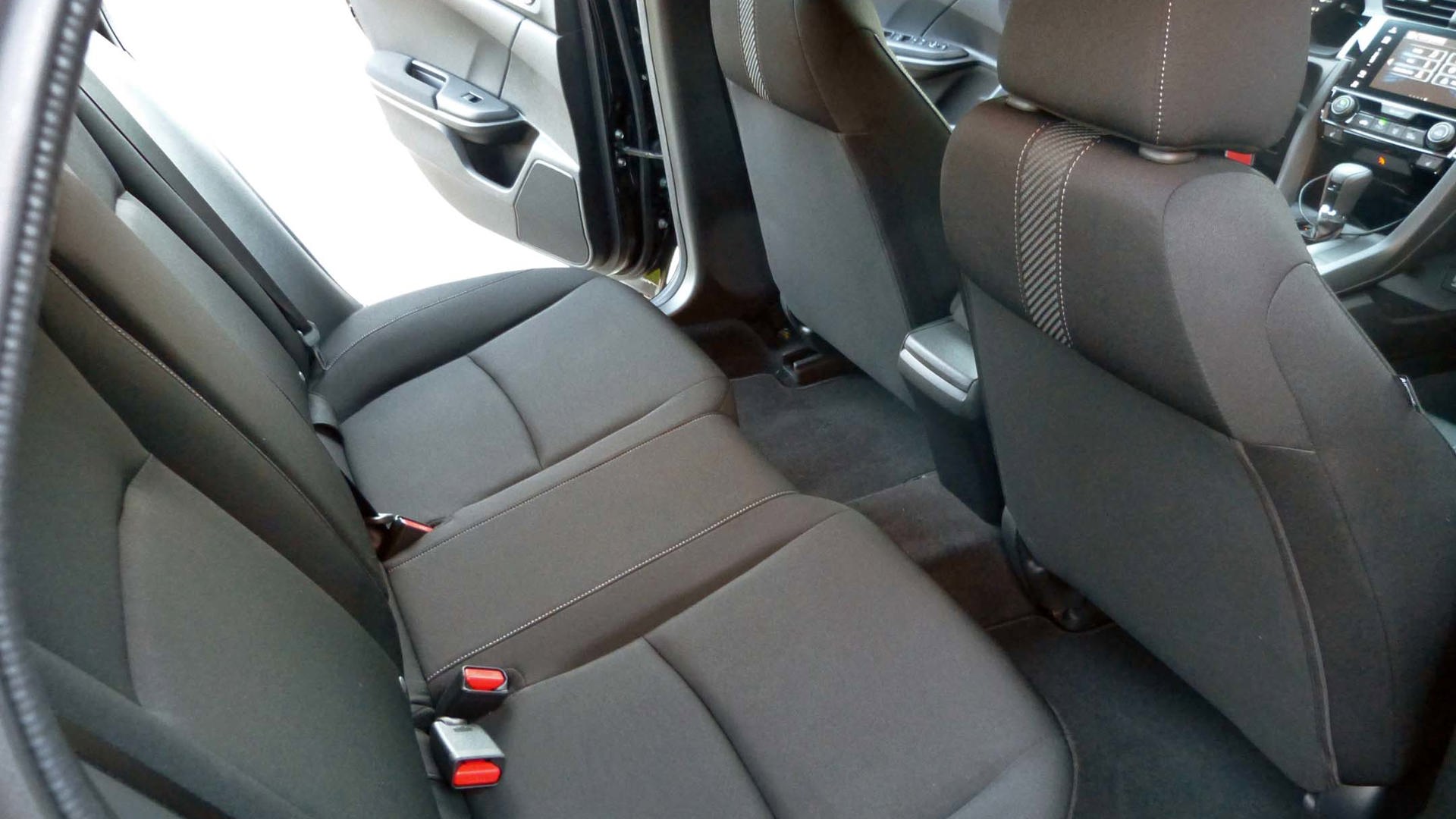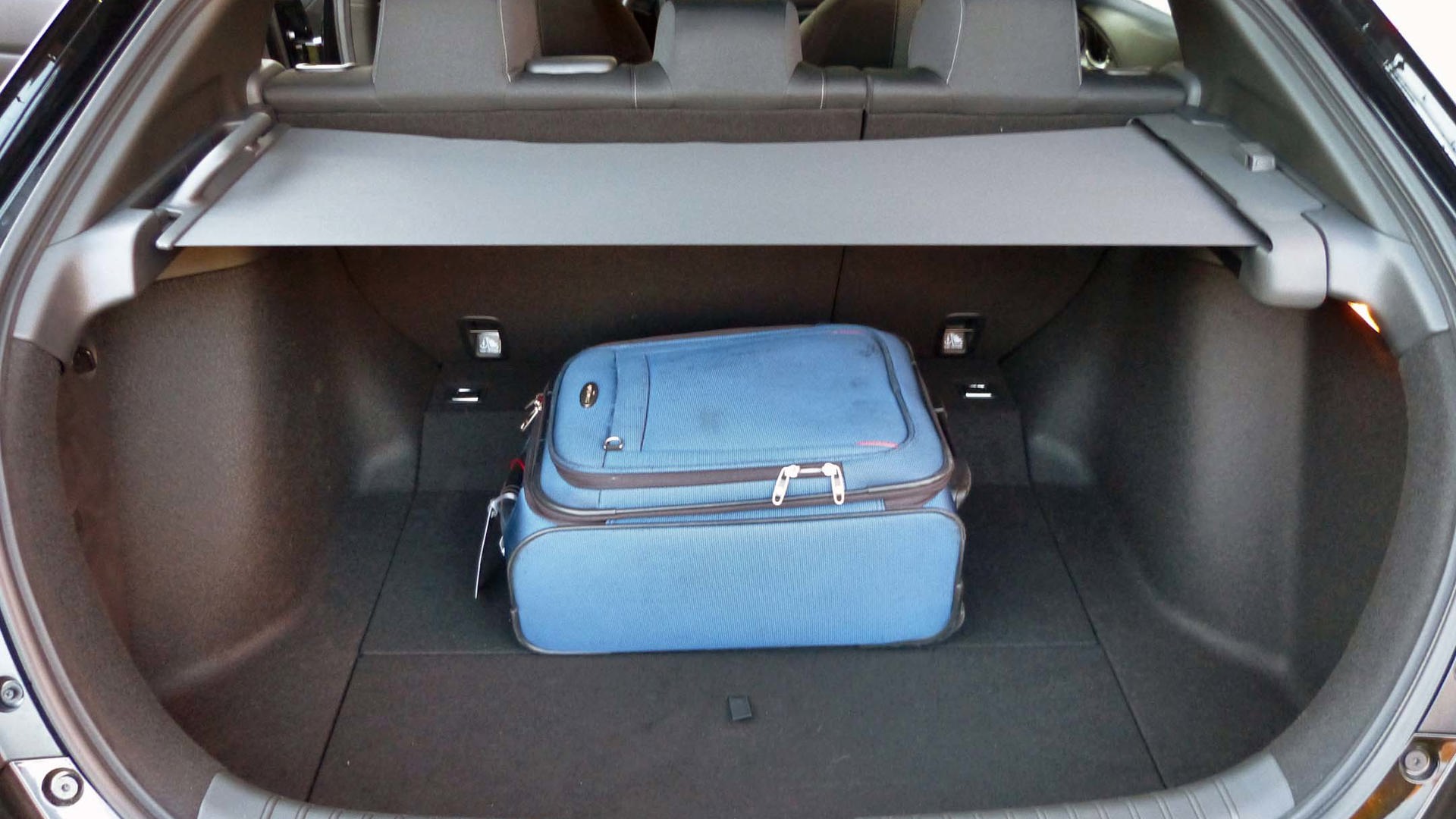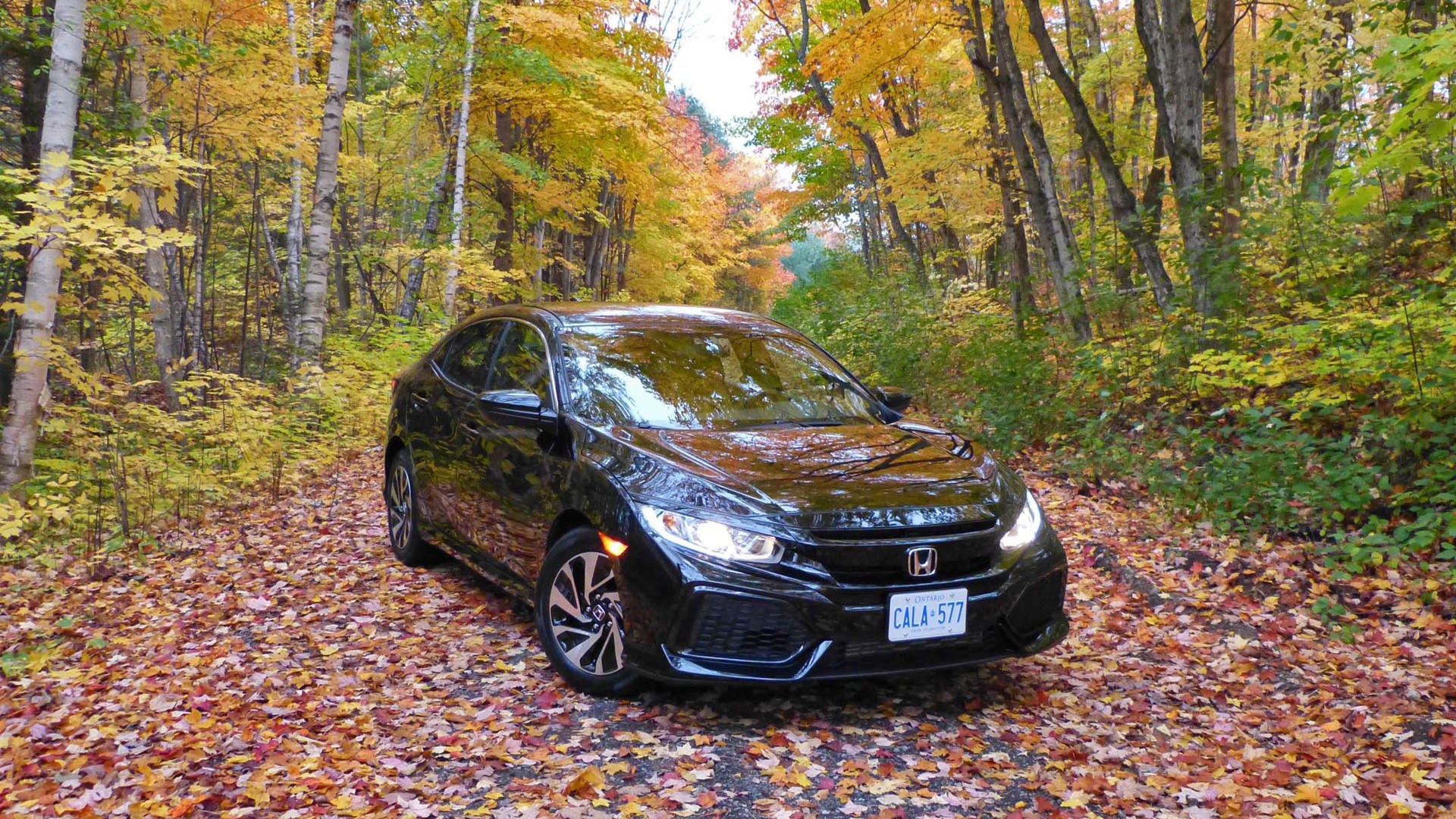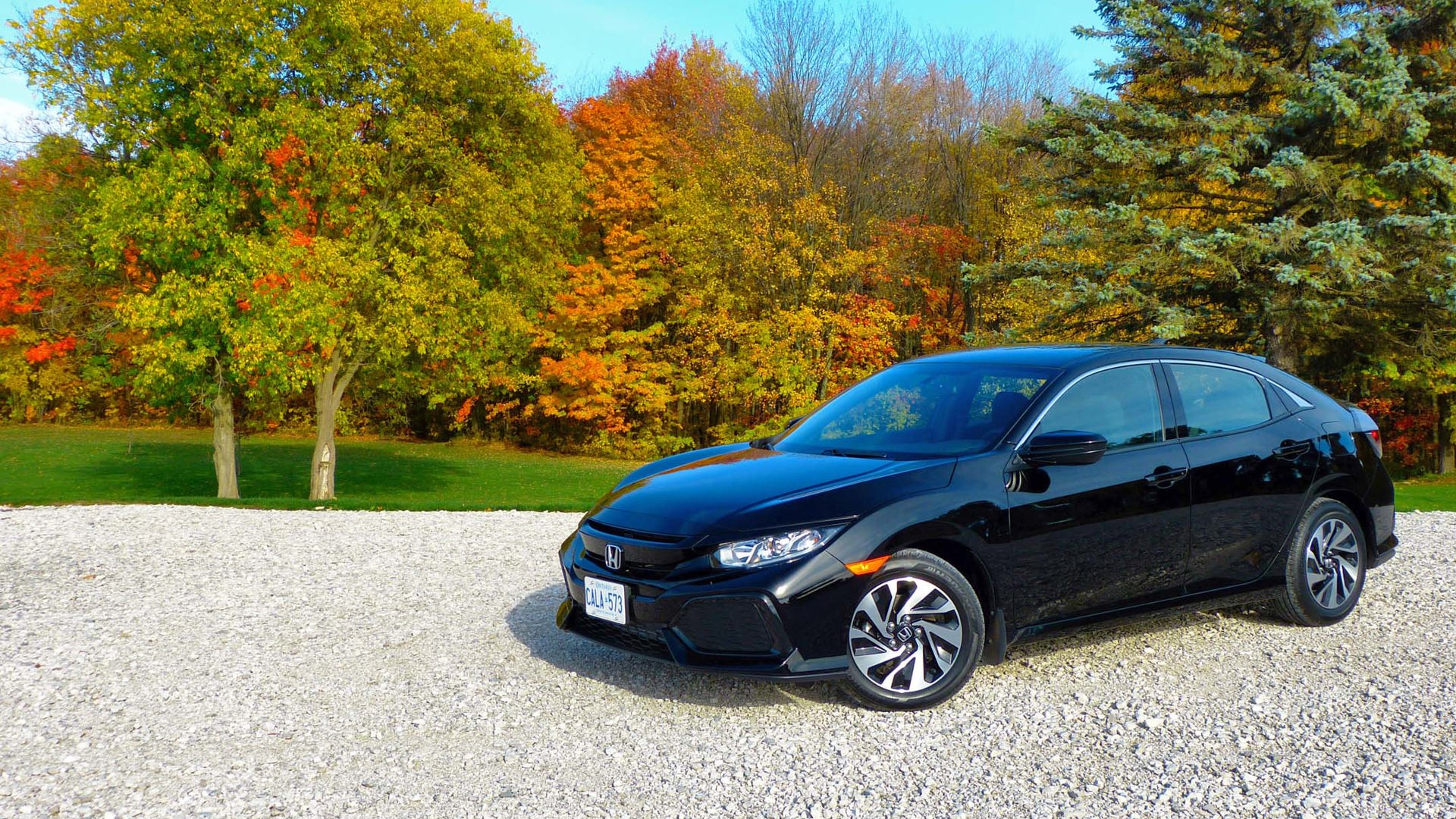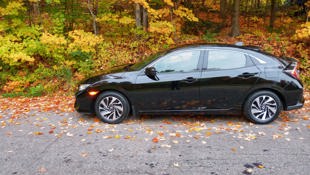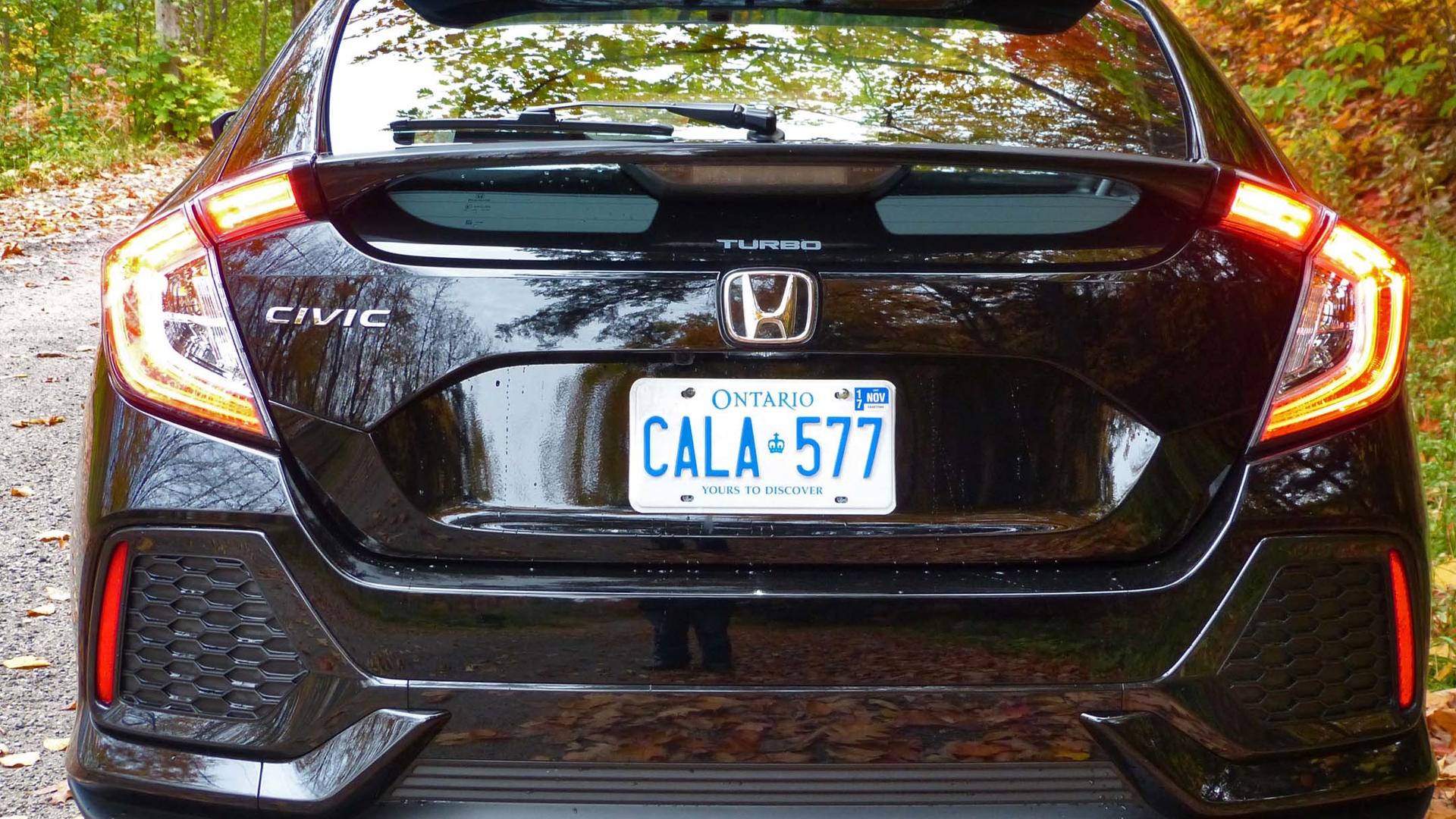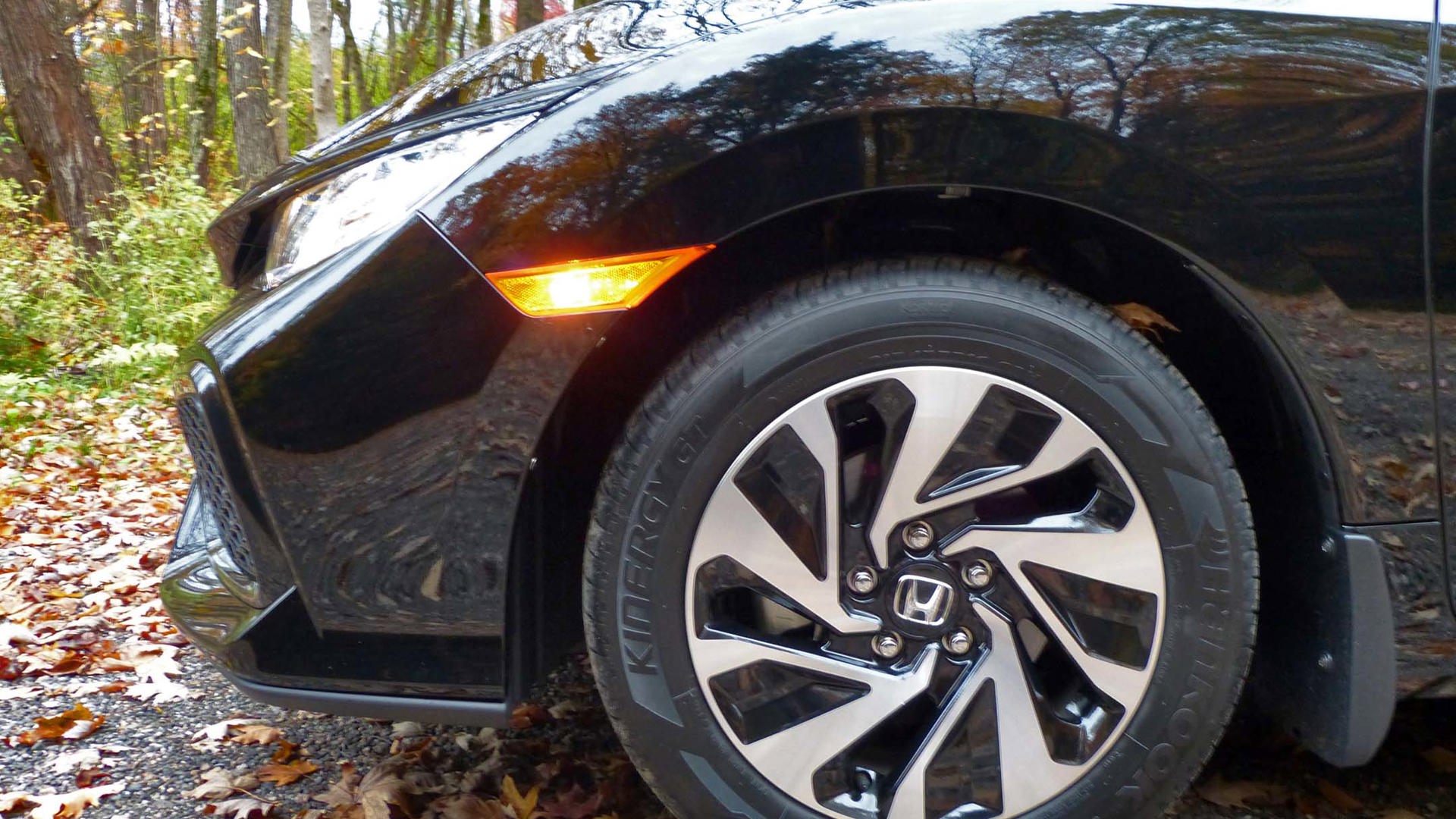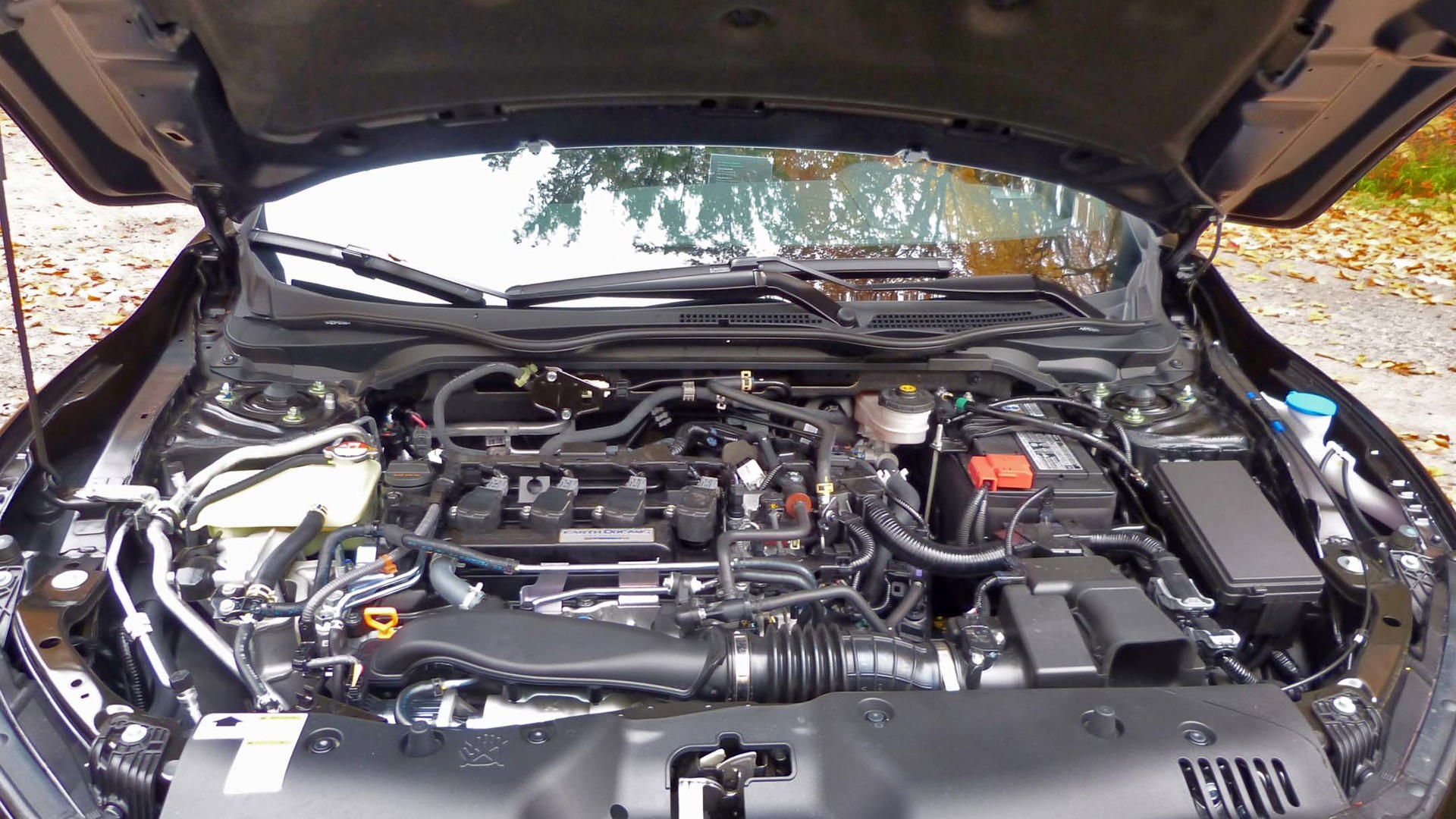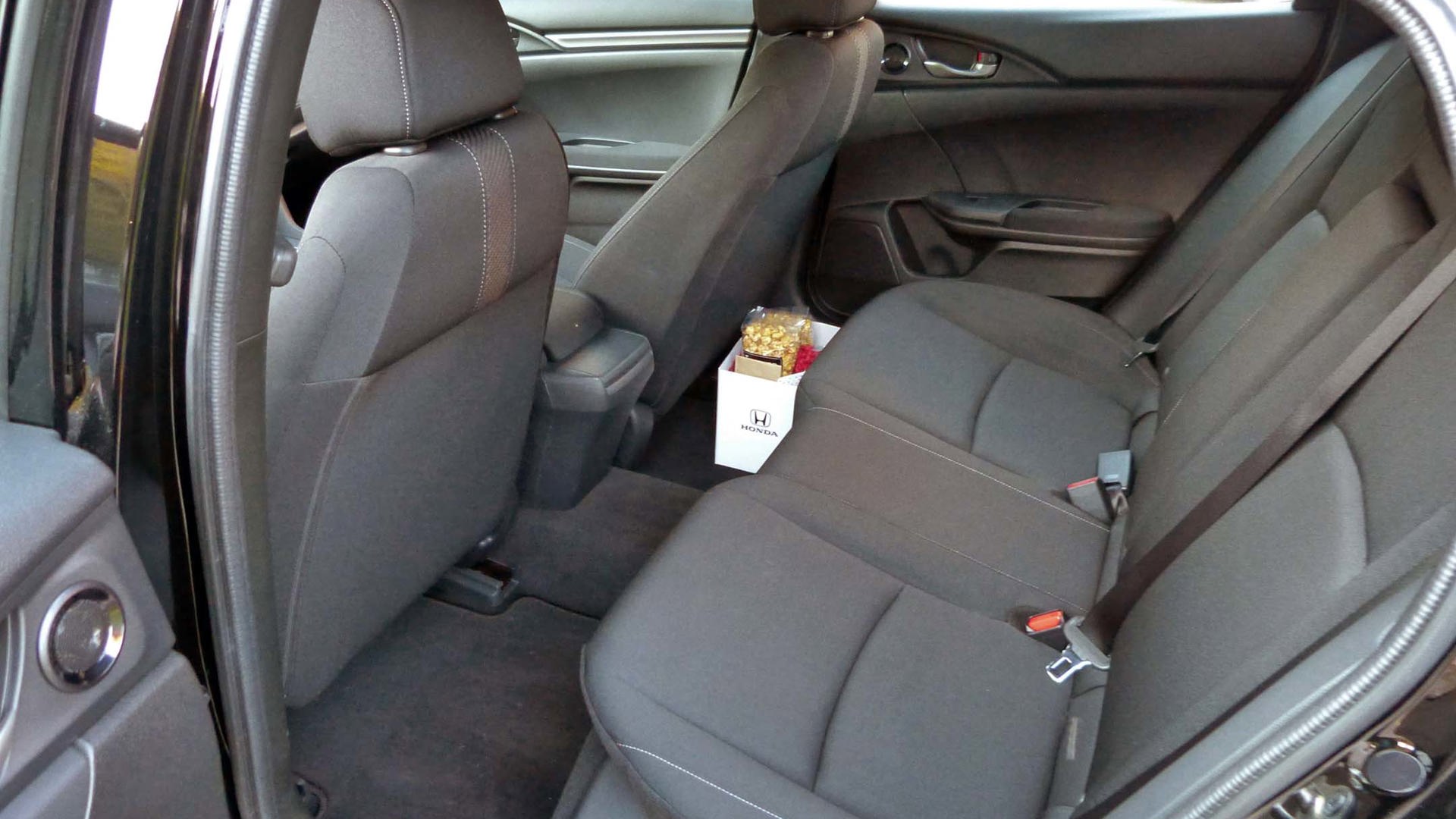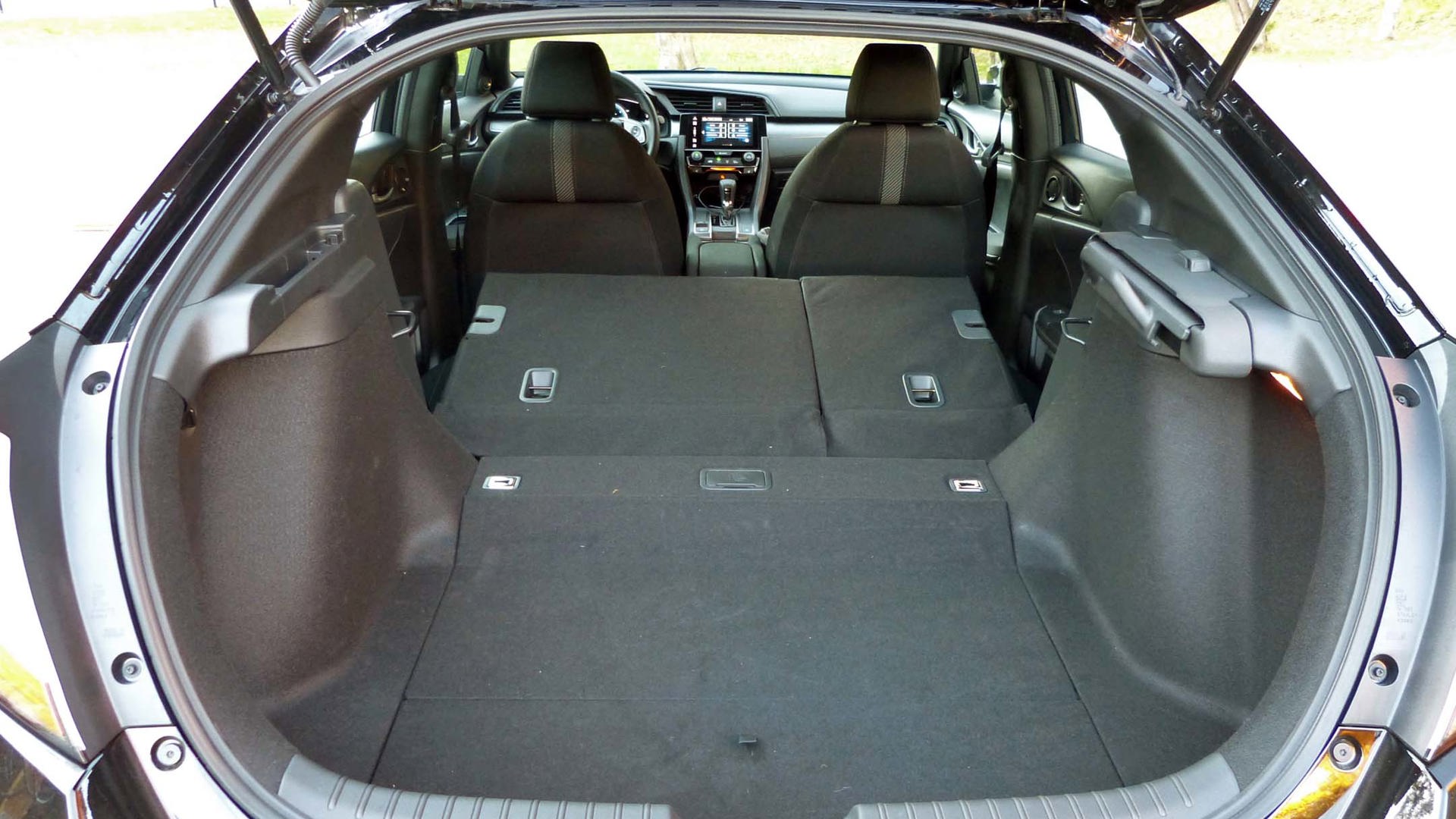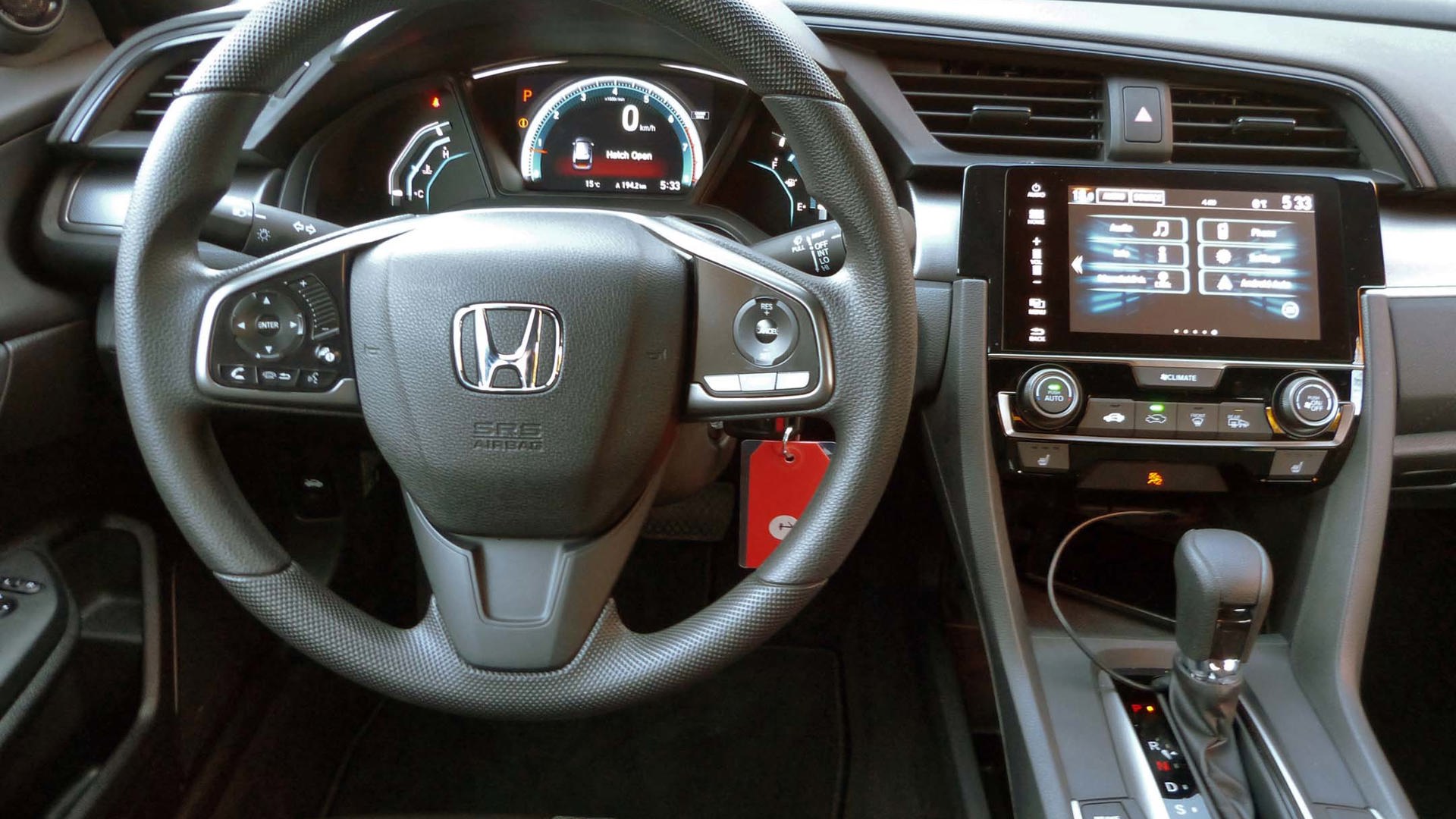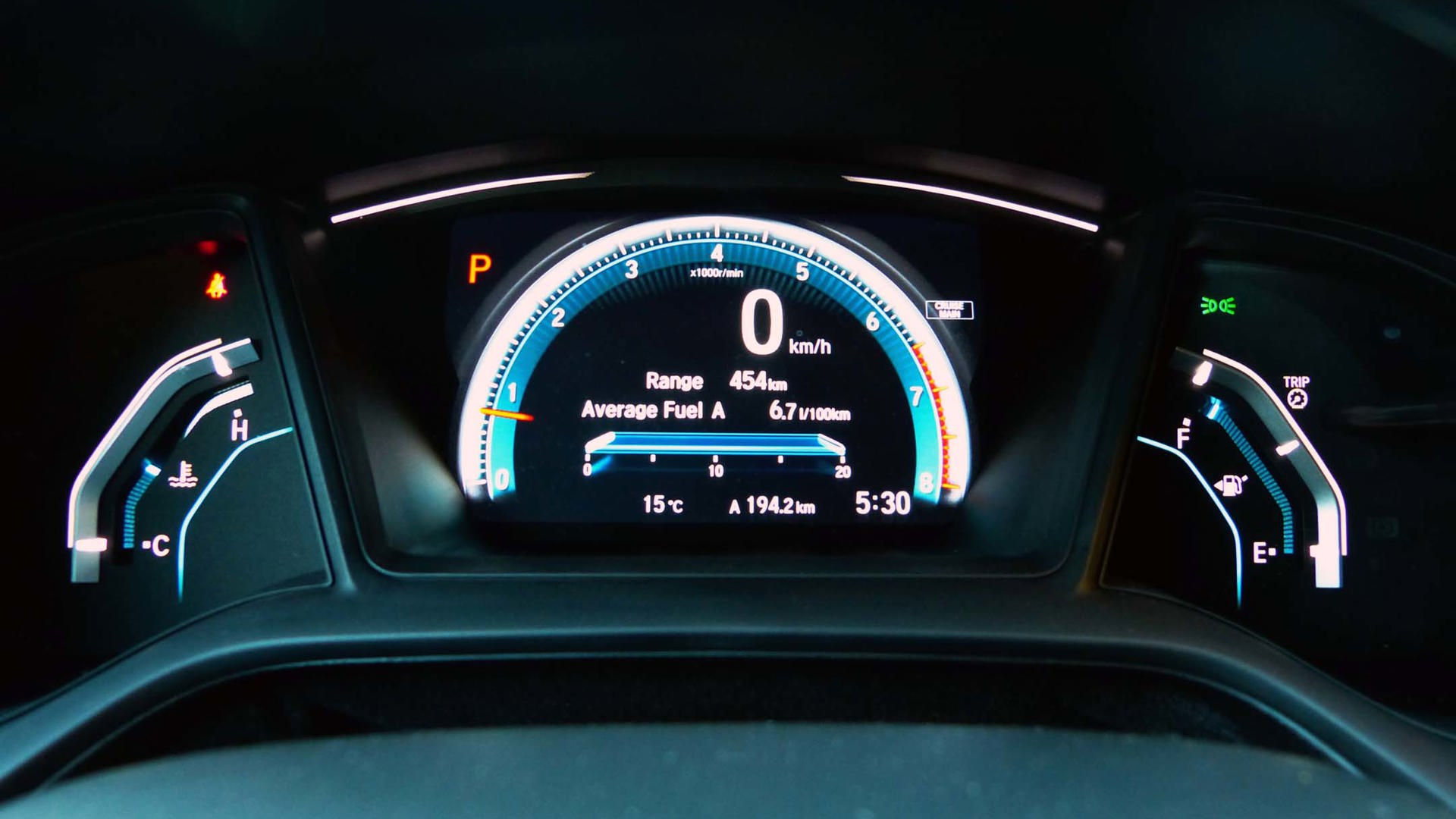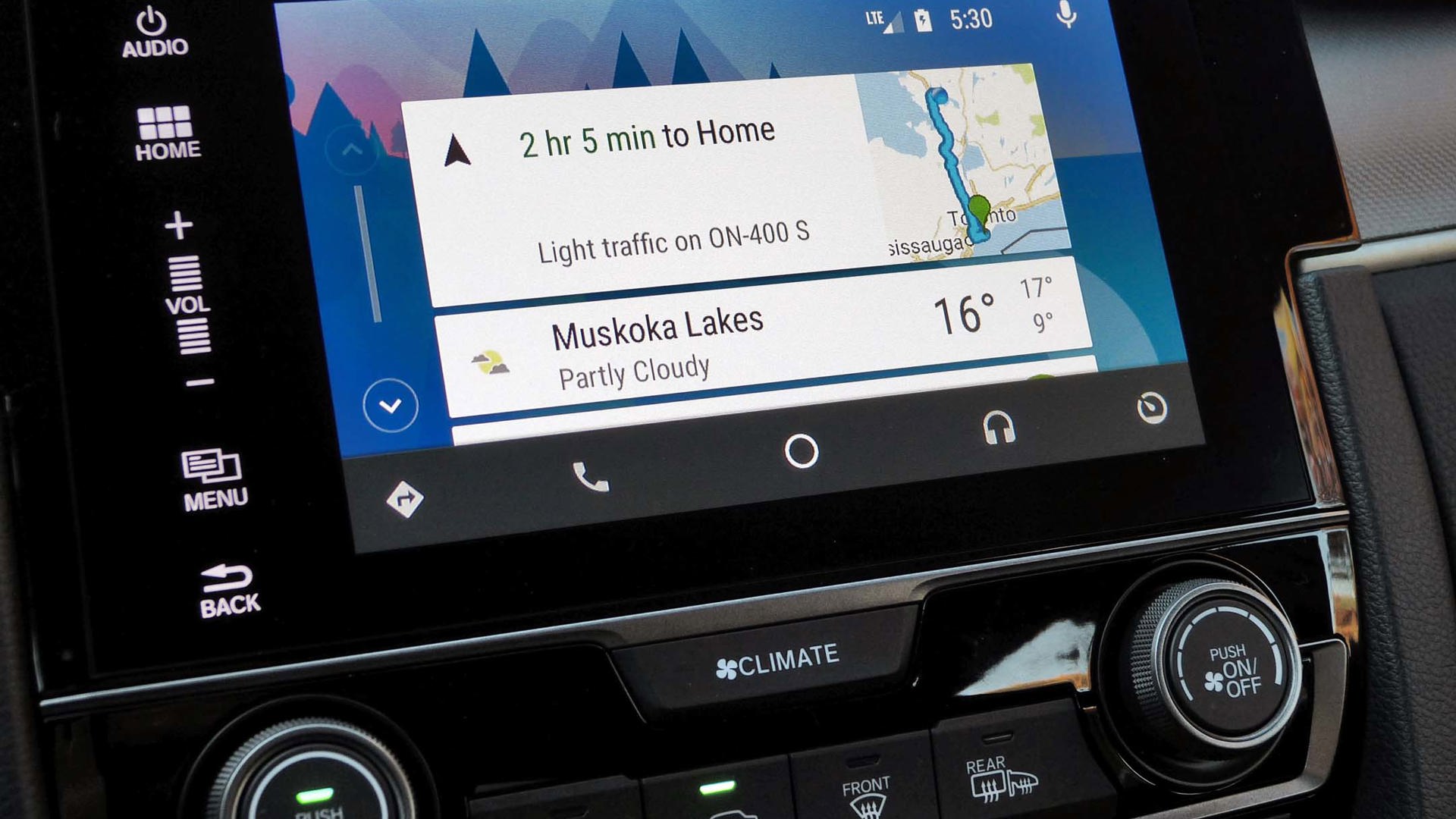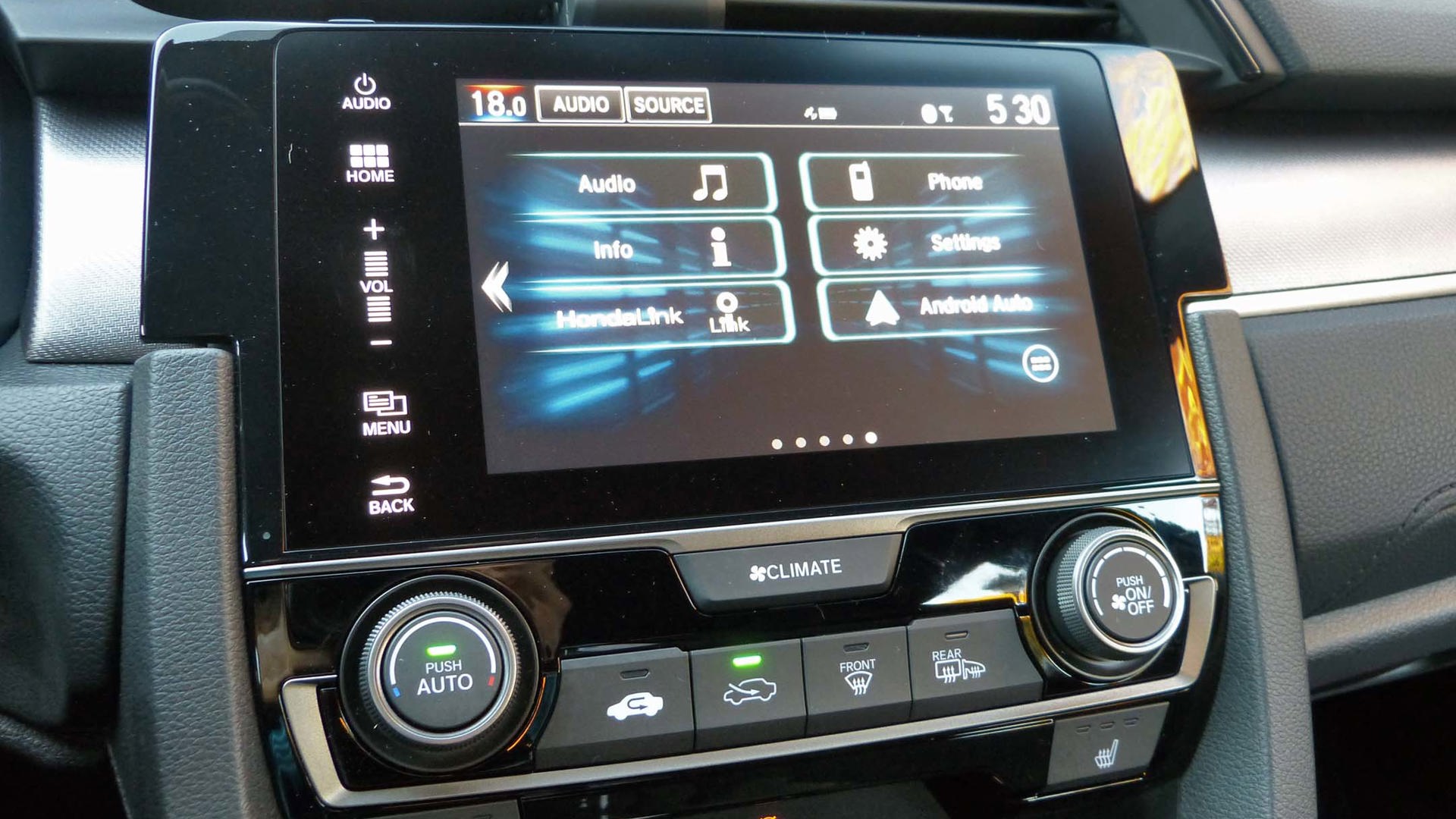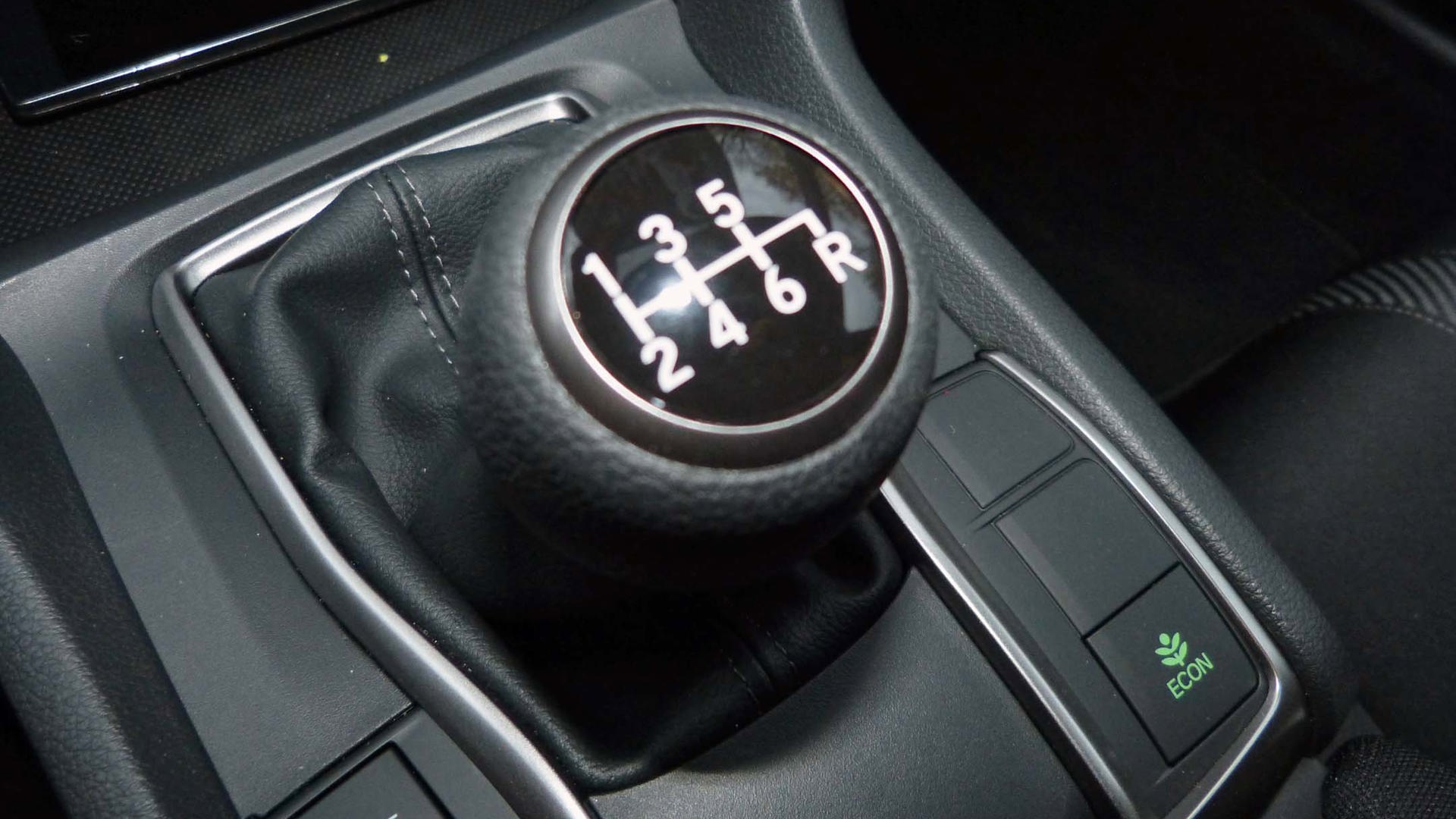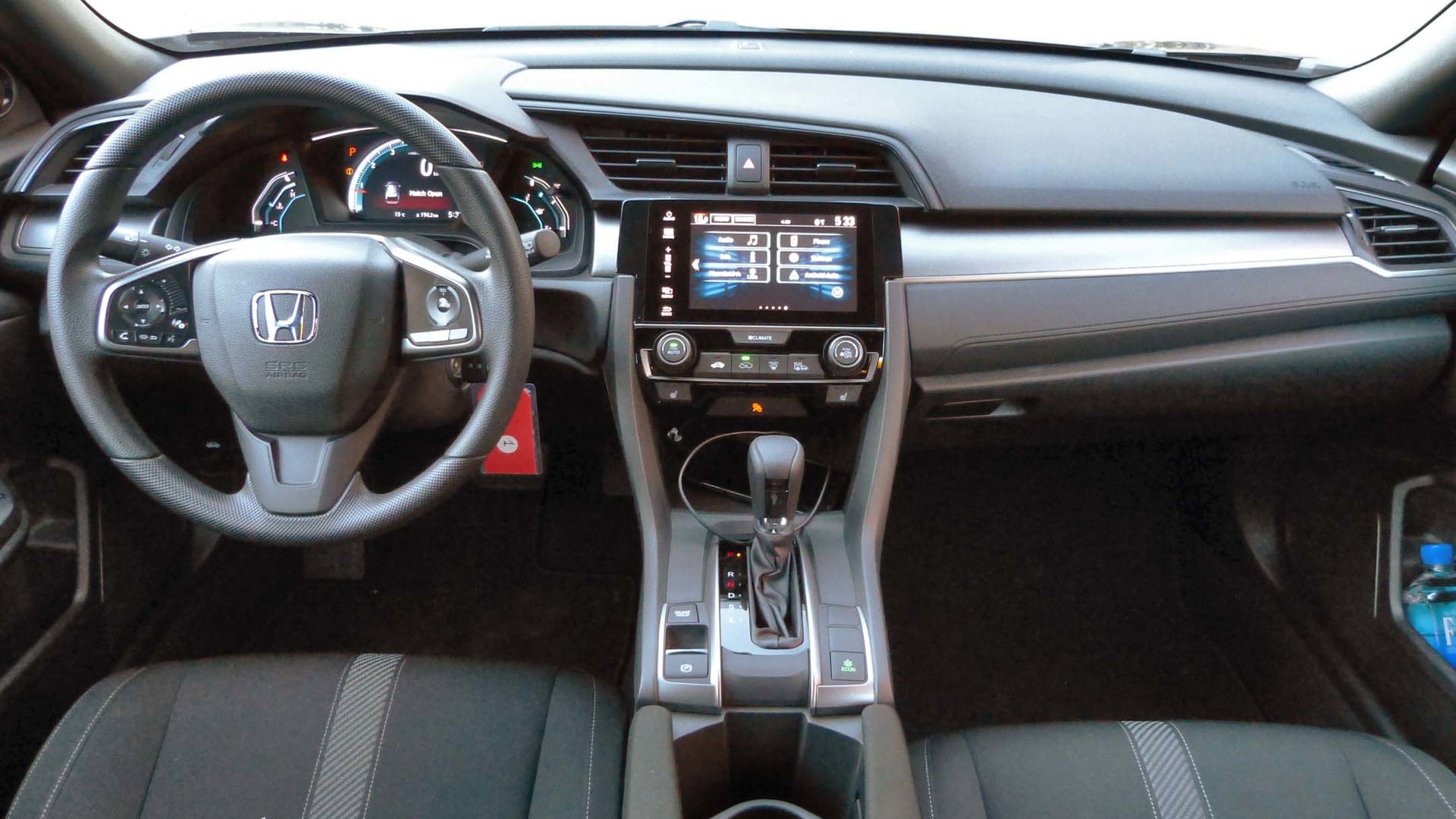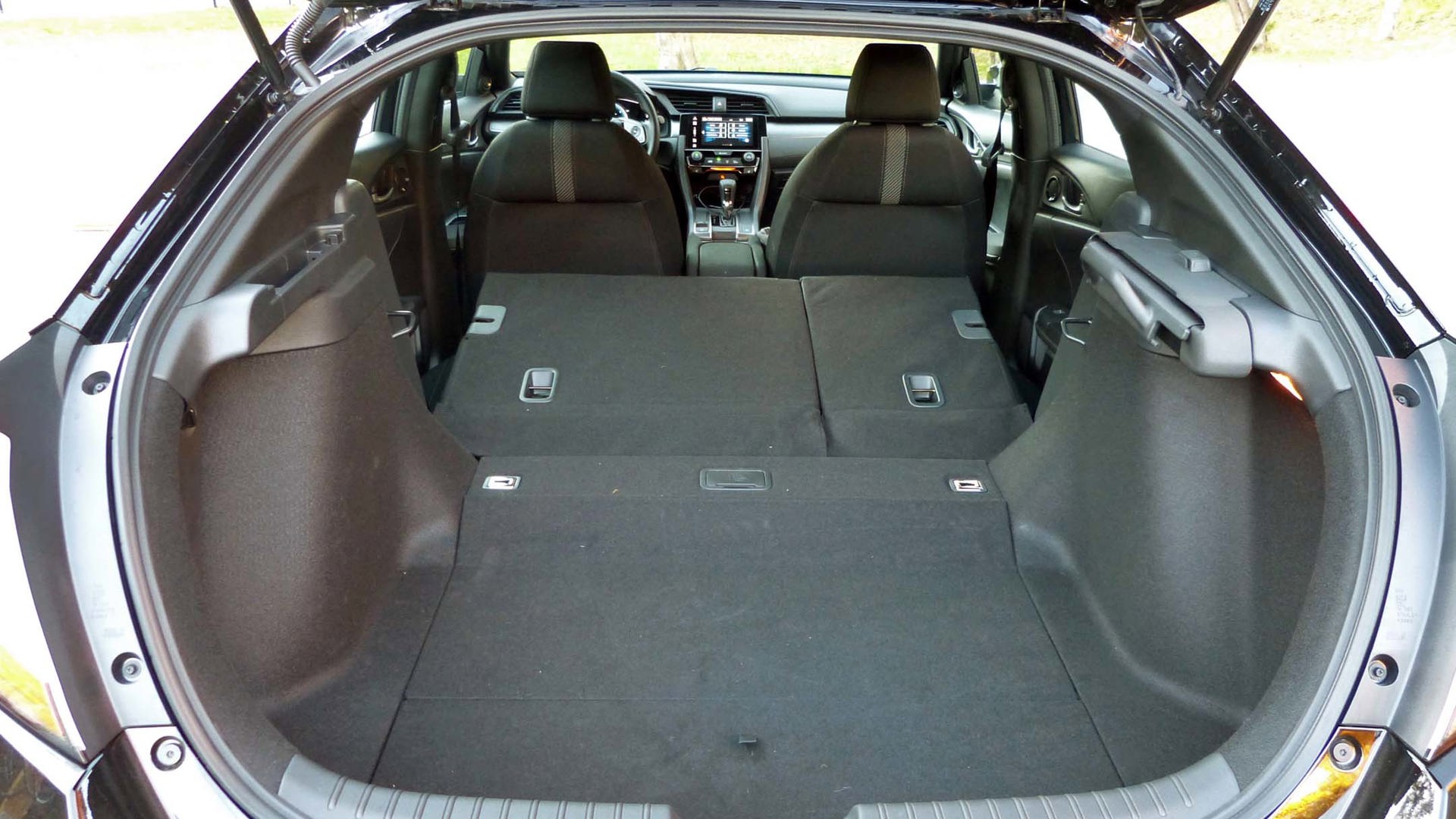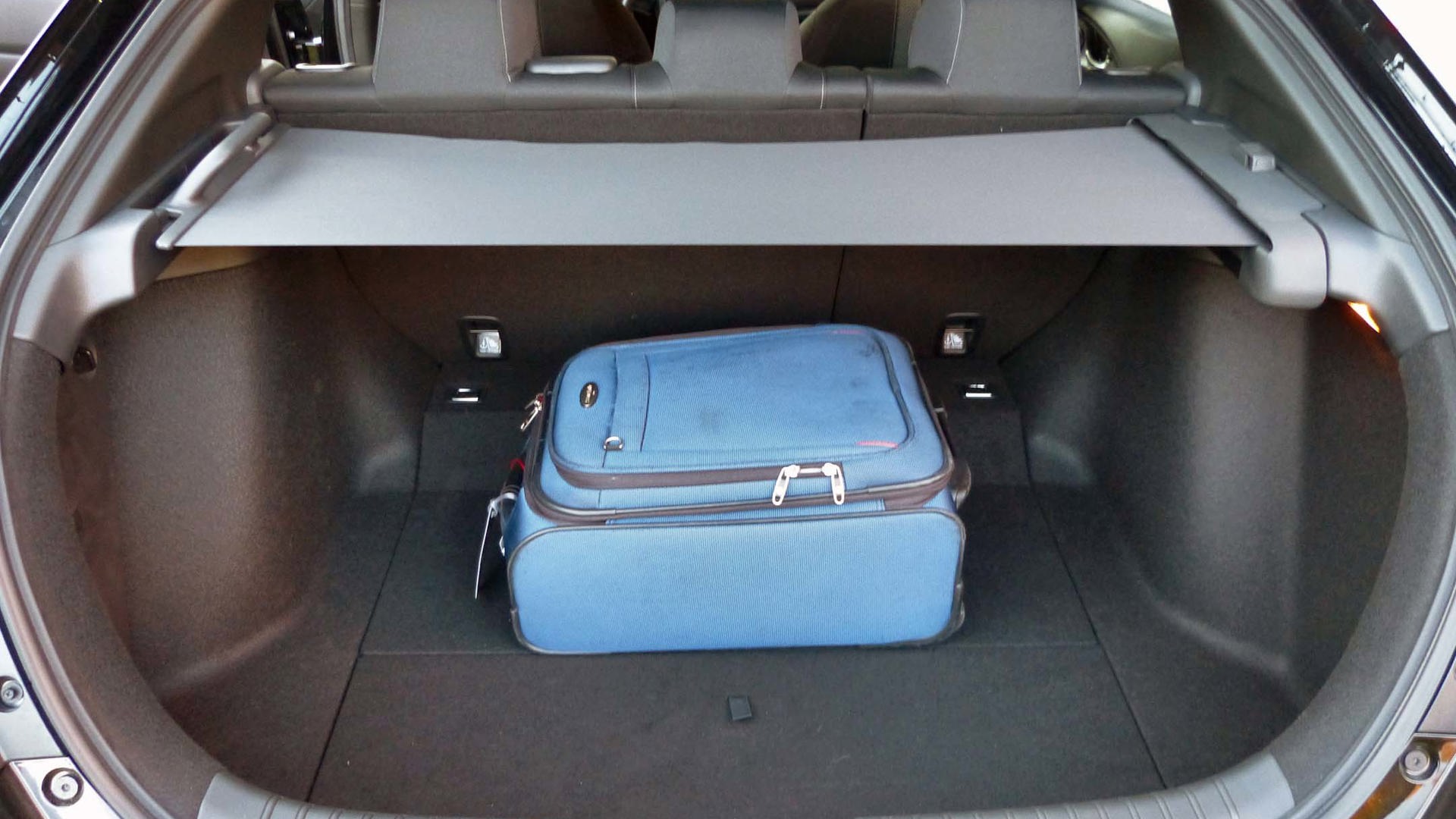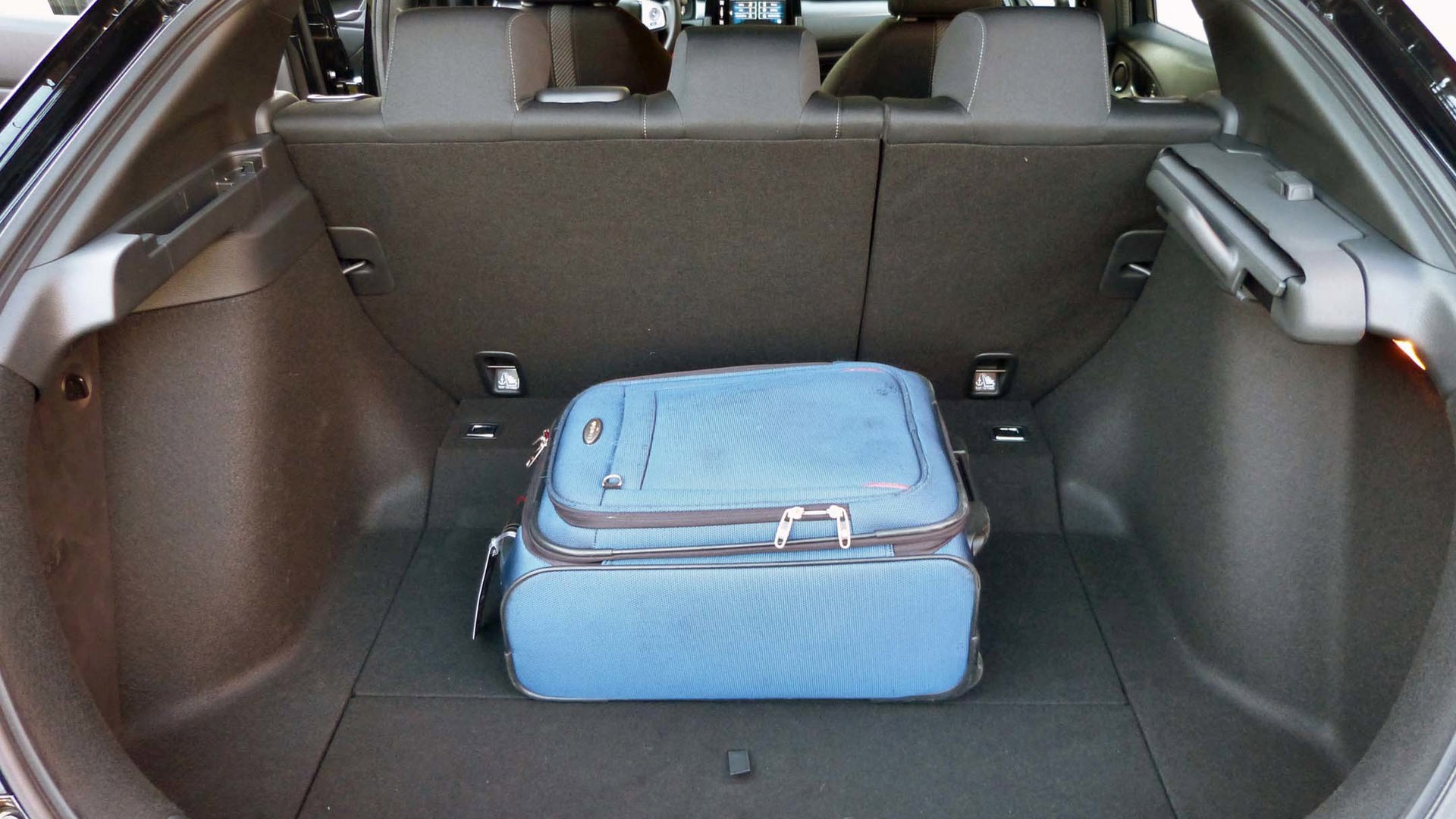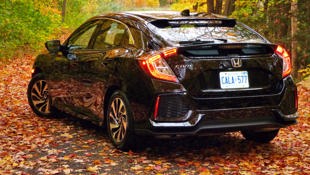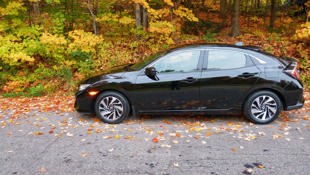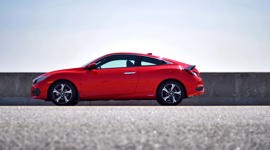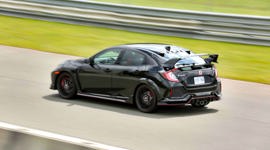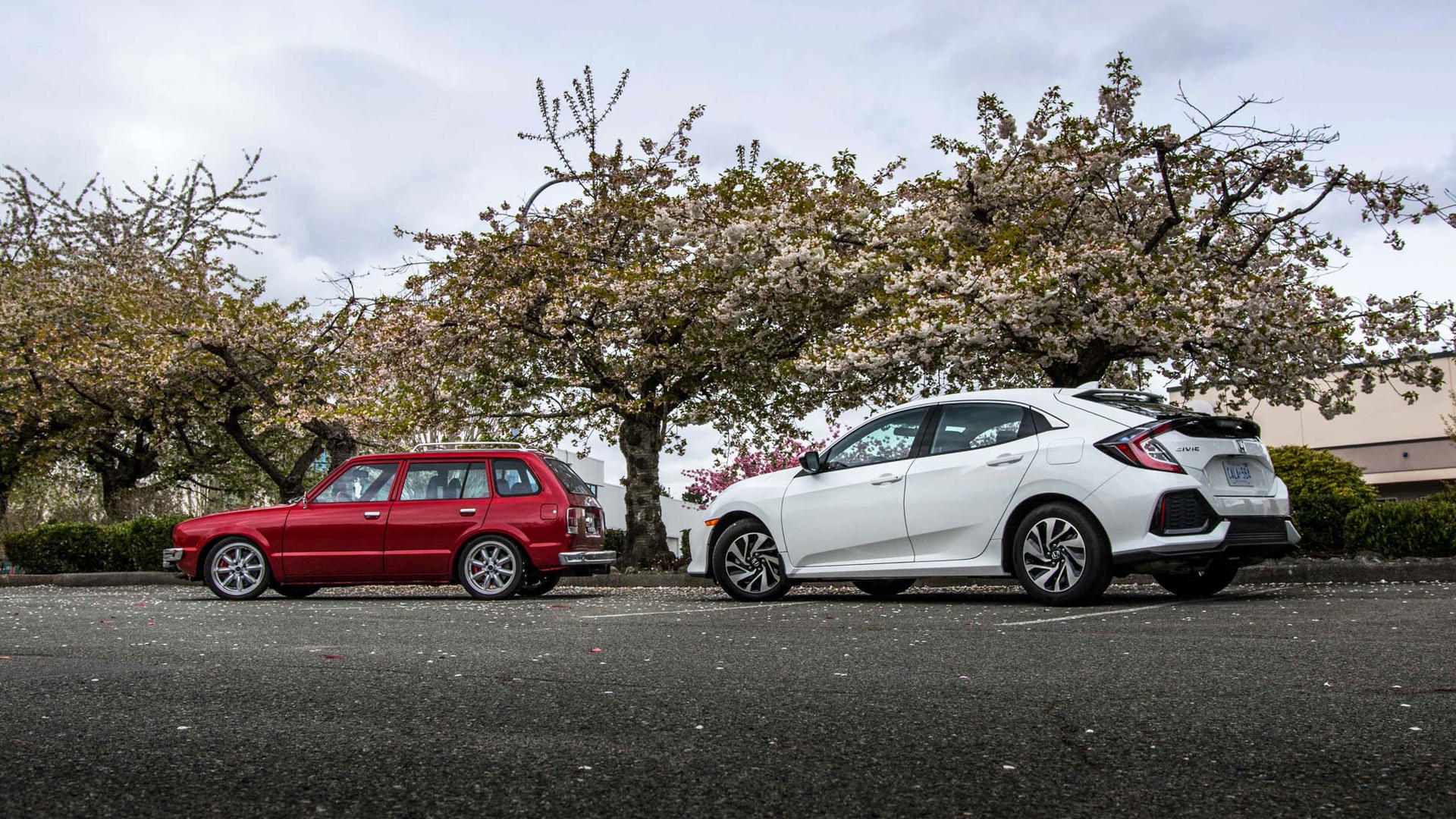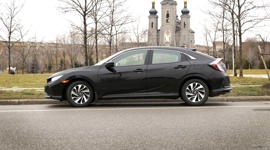The road, pock-marked and rough, rises sharply and then falls away to the right. Slick with dew, the uneven tarmac is slippery and the curving undulations force the inside front tire into the air. Spookily, it hangs as the Civic Hatchback glides over the top of the hill and transfers all its weight to the outside. For a moment, I’m tense. “When this thing lands,” I think, “Life is going to be untidy…”
The Civic Hatchback really showed its bones out here. I was raving by drive’s end.
Honda must have some serious faith in this 2017 Honda Civic Hatchback. They’ve sent us out in the first they could get their hands on. It’s a base model, with cloth seats and a key you have to actually put in a slot and turn. This is the model with the 16-inch wheels, the slightly lower-tuned engine, and none of the trick Honda Sensing gear we’ve come to appreciate. Not only that, they’ve sent us out on one of the roughest, most technical, difficult and downright dangerous roads in Ontario.
The famous Muskoka colours pepper the asphalt as autumn leaves float down from the trees, the grip level is variable, and these ruts are rough. At one point, a railway crossing has me ripping off the navigator from the old Sega Rally arcade game… “Over yump!”
I’m not at the rail crossing yet, I’m still on the crest of that hill, waiting for the Civic to land hard, pogo back and send me into a career-ending tree.
But it doesn’t. The Civic lands, sets, and sticks. The damping has been tuned to “European specs” according to Hayato Mori, Honda’s Senior Manager of Product Planning. The damping is phenomenal, and this road is highlighting that beautifully.
And so it should be. The hatchback is the platform for the inbound and much-anticipated Civic Type R. Perhaps even more than the NSX, whose 438-month lead time led to a lukewarm reception, the Civic Type R is the car that many feel will get Canadians excited about Hondas again. As far as the suspension and the chassis drives, it’s a very strong jumping-off point.
The steering is light, but communicative and the Civic turns into corners with dog-like obedience. It’ll catch the Frisbee too, given the opportunity. Having spent some months in a long-term test of the Civic sedan I thought I already had a handle for how the hatch would behave, but it manages its weight transfer and the myriad of curveballs our rural roads can throw up with complete confidence. There’s even a little hint of pointiness in the balance of the car. I found myself turning out to catch a sliver of mid-corner yaw on more than one occasion.
It’s fair to say that the road we were on would be fun to drive in an Odyssey it’s such a good one, but the Civic Hatchback really showed its bones out here. I was raving by drive’s end. Anyone who still sees the Honda Civic as an appliance could jump into one of these and feel themselves instantly converted.
I’m saying that before I even drive the Sport models, which get upgraded 18-inch wheels and more power. While all hatchback Civics get the 1.5L turbo, the LX model has a detuned version designed to run on regular fuel. The Sport trims get a different, centre-mounted twin exhaust and more aggressive engine mapping which requires premium (91 octane) fuel. The low-tune engine cranks out 174 hp at 5,500 rpm (in manual mode, 6,000 rpm in CVTs) and 167 lb-ft. The Sport engine gets 180 hp and 177 lb-ft of torque. All trims are available with either a six-speed manual or a CVT. Curiously, the CVT engine is tuned to only produce 162 lb-ft of torque but on a much flatter and broader curve.
The CVT is equipped with a “sport” mode, which I noted meant you were either doing 1,500 rpm in drive or 3,000 rpm in sport – no matter what speed. Whether I was cruising at 60, 70, 80 or 105 km/h, drive gear was 1,500 rpm, sport mode was 3,000 rpm. CVTs are fun that way.
The CVT is well-tuned to provide acceleration when required and was happy to hold high revs when things got spirited, it also moved through its ratio range smoothly, with no flaring, bogging or groaning under my watch. It also produces a fuel economy bonus.
Equipped with a 6MT the LX and Sport engine will both achieve 8.0 / 6.2 / 7.2 L/100 km city / highway / combined. In CVT form it’s good for 7.7 / 6.0 / 6.9 L/100 km – about a five percent difference.
The hotter Sport lump achieves 7.9 / 6.6 / 7.3 L/100 km in CVT mode, a city improvement but highway drop. Driving only the LX trim I saw 6.9 L/100 km after 150 km of hard driving in a CVT and 7.1 L/100 km in the manual – mirroring the official combined figures nearly exactly.
Naturally, the manual gearbox is the more engaging to use. It’s light in the clutch and the throw but the gates feel well-defined and the stick is fun to use. The pedals are well-spaced for heel-and-toe enthusiasts but the rev-happy 1.5T is the real star of the show here, spinning up freely to accept a lower gear.
The electrically assisted steering has been retuned to be slightly stiffer and heavier and I enjoyed its weighting. The feedback through my arms was good too and seemed to mesh with the messages being sent through the seat. The wheels (235/40/18s in Sport, 215/55/16 in LX models) are connected at the front via a MacPherson strut system with hydraulic bushings and an “optimized marketing engine mount” plus a stabilizer bar. At the back you get a fully independent multi-link suspension.
Brake-based torque vectoring further assists in cornering stability.
From the B-pillar forward the Sedan and Hatch are near-on identical with only a larger, wider bumper with bigger intake cut-outs separating the five-door from the four. Out back, there is a 135 mm shorter overhang which provides more “sportiness” aesthetically and arguably also in practical terms.
Those two spoilers on the hatch are functional too, though not for downforce. Instead they produce drag-reducing wind vortices that help fuel economy.
To make up for the less-rigid hatchback chassis, Honda has had to add more bracing and reinforcement around the floor and the chassis, as well as more sound-deadening material and insulation. The result is an 86 kg weight gain over the Civic sedan to 1,349 kg in LX trim and 1,385 kg for Sport models.
There’s also a 35 mm loss in rear-seat leg room but a gain in head room between sedan and hatch models. Cargo volume is the obvious winner, with 727 L versus 416 with the seats up and 1,308 L available in the hatch with the seats down. Honda claims a class-leading door opening, and it is a gaping maw if ever there was one.
The seats don’t fold flat though, and there is a drop off between the seat backs and the floor when they’re collapsed. The false floor could have been designed with channels in the tail end of it, so you could move the floor to be lower or sit level with the seats. Nissan does this to great effect in the Versa Note, and Mazda’s CX-3 does the same thing.
What those cars don’t have is Honda’s new, super-trick tonneau cover. This unit is a blind that goes side-to-side and is completely out of the way when not in use – no more distraction bar that you have to remove and store. Sometimes, answers are so obvious you wonder why they took this long to get to.
On that subject, kudos to Honda once again for their adoption of Android Auto and Apple CarPlay compatibility in the infotainment system. It means you have navigation access on even base models, and a much more intuitive voice-operation system. Next on our wish list is for them to put in a volume knob, like they did in the just-released 2017 Honda CR-V.
In value terms, the Civic Hatchback is a little less spectacular than the sedan. Partly because the hatch is only available with the 1.5T (not the 2.0L naturally aspirated unit), but also because it is more expensive to build, the hatch starts at $21,390 while the sedan starts at $19,290 in LX trim. The sedan is also available in DX trim (one trim lower than where the hatch starts) which can be had for just $16,390. At the top end, the Civic Sedan Touring is $27,390 – $3,300 less than the Sport Touring Hatchback at $30,690.
Honda Sensing is available as a $1,000 option, aside from Sport Touring, where it is already equipped standard. The CVT is an additional $1,300 at each trim step.
LX models get standard: 16-inch alloys, 180 watt audio, Apple Carplay/Android Auto, automatic climate control, heated front seats, rear-view camera, remote entry, retractable cargo cover and the body-colour roofline rear spoiler.
At $25,190 the Sport gets the 180 hp engine tune, dual-zone automatic climate control, dual centre exhaust, fog lights, Honda LaneWatch, leather-wrapped steering wheel, moonroof, push-button start and proximity entry, remote engine start, front, rear and side skirts, steering-wheel-mounted paddle shifters on CVT models and aluminum pedals.
Want more? Touring models get a 542 watt premium audio system with 12 speakers and a subwoofer, navigation, driver’s eight-way power seat, passenger four-way power seat, leather trimmed seats, LED headlights with auto on/off, rain-sensing wipers, Sirius XM, wireless charging, auto high-beam and Honda Sensing tech.
Honda Sensing tech is something I’m a fan of. Road-departure mitigation with lane-departure warning, adaptive cruise control with low-speed follow, lane-keep assist and collision-mitigation braking with forward-collision warning are all appreciated safety assistance and well-priced at $1,000.
Which for my mind makes the Civic Hatchback LX with Honda Sensing the best-value unit in the line-up. At that point the price gap between sedan and hatch is $2,100, but I’d argue the versatility and style of the hatch makes that worthwhile. In the mid-range is the Coupe, and it was interesting to hear Honda’s sales volume predictions. They expect the hatch to represent 15 percent of units sold, and the coupe 10 percent. The remaining 75 percent will be sedans. I was surprised the hatch wouldn’t be closer to the sedan, especially given Canadian’s habit of buying higher-price trims and models within ranges.
Canadian sales trends favour the Civic family greatly. As of September Honda has shifted 50,386 units, well ahead of the Hyundai Elantra at 40,418. That puts Honda on track to be the highest-selling car in Canada for a nineteenth straight year.
Frankly, Honda deserves that sales position right now. This new Civic has elevated the small car segment by a full generation. It’s ahead in fit, finish, driveability, fuel economy and performance and this new hatch is a further improvement.
The Canadian-built Civic is Honda’s most important model. In many ways it defines the brand. The three iterations released so far have steadily built the excitement level and energy around the brand and the nameplate. With the Si and Type R still to come I’m already impressed by how good the Civic is.
This is a car with the sporting credentials to match the marketing hype. It’s genuinely good – blindingly good – and a worthy sales champion.
Pricing: 2017 Honda Civic Hatchback
2017 Honda Civic Hatchback LX MT: $21,390
2017 Honda Civic Hatchback LX CVT: $22,690
2017 Honda Civic Hatchback LX with Honda Sense: $23,690
2017 Honda Civic Hatchback Sport MT: $25,190
2017 Honda Civic Hatchback Sport CVT with Honda Sense: $27,490
2017 Honda Civic Hatchback Sport Touring MT with Honda Sense: $29,390
2017 Honda Civic Hatchback Sport Touring CVT with Honda Sense: $30,690


